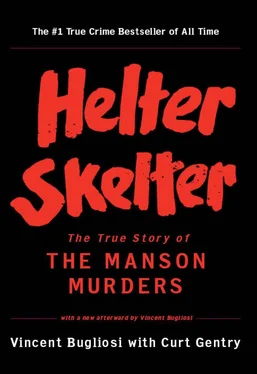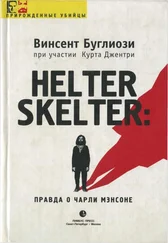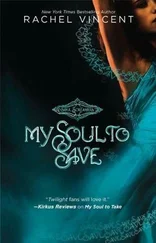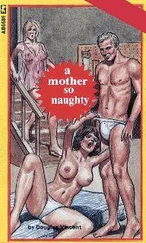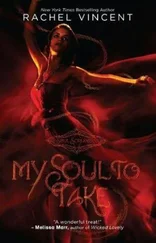Some have compared Manson with the Reverend Jim Jones and David Koresh. Although to their followers, Jones, Koresh, and Manson were all messianic, and each possessed the uncommon ability to totally control and dominate the lives of those who believed in them, the comparison ends there. During the final moments of Jones and Koresh, in a state of dementia they ordered the suicide of their followers, then proceeded to take their own lives also. Turning their power over others inward by ordering and participating in mass suicide is a far cry from Manson driving down dark streets with his followers randomly looking for homes into which he could send them to commit human slaughter. Prior to the last days of Jones and Koresh, there is no evidence that either had ordered others to murder anyone for them. With Manson, murder was his religion, his credo, his way of life. As Paul Watkins said, “Death is Charlie’s trip.”
Derivatively, Manson’s slavishly obedient followers had come to share this hellish passion. Telling cellmates Ronnie Howard and Virginia Graham about the act of murder and the Family’s plan to start traveling throughout the country, killing people and whole families at random, Susan Atkins had said animatedly, “The more you do it, the better you like it.”
If Manson has continued to fascinate mainstream America, he has also done so with its fanatical elements. Today, almost every disaffected and morally twisted group in America, from Satanists to neo-Nazi skinheads, has embraced Manson and the poisons of his virulent philosophy. He has become their spiritual icon, the high priest of anti-establishment hatred. As columnist William Buckley put it, Manson has become “the nation’s leading anti-citizen.” Wayne McGuire, in Aquarian Journal , predicts that “sometime in the future Charles Manson will metamorphose into a major American folk hero.” Though Frenchmen will likely stop drinking wine before that happens, [94] However, the Manson T-shirts and Guns N’ Roses’ album show that the attempted apotheosis and romanticizing of Manson is under way. Two screen projects in the works (the British television documentary Manson: The Man, the Media, the Music, and the American full-length feature Manson in the Desert ), whose themes divert the viewer’s attention from the murders, unfortunately coalesce with this effort.
Manson is indeed a hero to many on the jagged margins of our culture. In a 1994 interview, seventeen-year-old +Natalie, [95] The cross symbol (+) indicates a pseudonym.
a Satanist, says: “Charles Manson is an idol and role model.” The murders happened, she says, because “Manson wanted a new government and anarchy to clear out the garbage, the useless people.” Her twenty-year-old boyfriend, +Robert, a fellow Satanist with whom she lives in San Francisco, adds about the Tate-LaBianca victims: “I feel that might is right, and whoever isn’t prepared to defend their own life shouldn’t cry when their life is taken.” +Willie, a twenty-one-year-old white supremacist, says he “got into Manson on the twentieth anniversary of the Tate killings when I went to this heavy metal tribute to him. I had already met all the peace and love cult people and when I ran into the Satan types I liked all the negative aspects they stood for. So ever since, I’ve been hanging out with people that support Manson.” Willie feels that as a white man he is the victim of racism in our society, that blacks are “like Neanderthals and overpopulating our culture.” If Manson got out, “he would improve the quality of life.” +Alex, a forty-two-year-old neo-Nazi who has corresponded with Manson for years, says his “discovery” of Manson can only be compared to his earlier discovery of Adolf Hitler and the National Socialist Party. He calls Manson “the foremost revolutionary leader in the world today,” and is special “by virtue of a one in a hundred million shot of gene combinations that gives him his ideas, personality, and physical presence.”
To the extremists, mass murderers like John Wayne Gacy and Jeffrey Dahmer are no more intriguing than they are to the average citizen. They are merely very sick psychopaths who kill for no reason other than to satisfy their unchecked homicidal urges. Though these killers attract inevitable media attention and interest for a while, they have no followers nor anything to say, and if and when they do talk, not even the extremists listen. The only message these homicidal monsters have to give by their violence is horror. Manson and his murders, on the other hand, are downright hip to the extremists. As misdirected as it was, his violence was political, revolutionary, and therein lies his main appeal to those on the fringes. Also, aware of the flat intellect of most mass killers, the extremists admire and are impressed with Manson’s unquestioned intelligence, the offbeat and sometimes searing nature of his insights, his enigmatic answers and allusions, and a mental deftness that allows him to speak in riddles, always with an underlying message. In short, they are drawn to the mystery of Manson.
While a Mansonesque culture and mystique grow outside his prison walls, Charles Manson, inmate I.D. # B-33920, and now fifty-nine, is incarcerated at Corcoran State Prison in Corcoran, California, a town of approximately nine thousand people located in the San Joaquin Valley of Central California, sixty miles south of Fresno. Corcoran is built on what was once Tulare Lake, home of the Tachi Indians.
Transferred from San Quentin’s Death Row to Folsom State Prison near Sacramento on October 6, 1972, Manson was sent to the California Medical Facility at Vacaville on March 20, 1974; back to Folsom on October 22, 1974; back to San Quentin on June 7, 1975; and back to Vacaville on May 11, 1976, where he remained until July 17, 1985, his longest stay at one prison. He returned to San Quentin on July 18, 1985, and was sent to his present location, Corcoran, on March 15, 1989.
Tip Kindel, public information officer for the California Department of Corrections, says the reason for all the transfers of Manson is that Manson has been “both a disciplinary and a security problem for the Department.” It would appear that the fame and outlaw reputation Manson acquired far and wide for the Tate-LaBianca murders has had a measurable effect upon how he perceives himself, causing him to act much more belligerently behind bars. Though he was never a model prisoner, I could find no reference in his prison records during his many years of incarceration before the murders of any assaultive behavior by him against prison personnel. But Kindel reports that since Manson’s conviction for the murders, he has physically assaulted prison staff (striking them with his hands, throwing hot coffee or expectorating on them, etc.) six times, the last time in February of 1992, and threatened them on numerous other occasions. Altogether, Manson has been found guilty of fifty-nine “C.D.C. 115s,” California Department of Corrections disciplinary write-ups. For the past year, however, according to an official at Corcoran, Manson “has not been disruptive” and “hasn’t gotten into any trouble.” Prison counselor Ernest Caldren observes that Manson “has a pattern of cycling in his behavior. There are brief periods of cooperation, and then he turns and threatens staff, particularly the inexperienced, with violent behavior.”
In 1972 and 1973, while at Folsom, Manson himself was assaulted on two separate occasions by fellow inmates. And a California state prison official says that throughout the years reports have reached prison personnel that one prison gang or another “had a contract on Charlie.” However, the only known attempt on his life was while Manson was at the California Medical Facility at Vacaville. The primary reason for sending Manson there was not because of the psychiatric facilities, as many imagined, but because it is considered to be the best place in the California correctional system to take care of a special prisoner like Manson. Vacaville, for the most part, houses the weaker segment of the prison population: those who, because of their physical or mental disability, are more apt to be victims than predators behind bars. On September 25, 1984, it was Manson’s misfortune to be working in the hobby shop at Vacaville with one Jan Holmstrom, a member of the Hare Krishna religious group serving a life sentence for the 1974 shotgun murder of his father, a Pasadena gynecologist. (In an ironic scene reminiscent of the Manson murders, Holmstrom wrote “baby killer” in blood on a wall of the family home.) Holmstrom doused Manson with paint thinner and then set him on fire, causing second-and third-degree burns to nearly 20 percent of his body, mostly his face, scalp, and hands. Holmstrom, described by prison officials as a “psychiatric case in remission,” said he set Manson ablaze because Manson had objected to his Hare Krishna chants and had threatened him for his religious beliefs. He also claimed, “God told me to kill Manson.”
Читать дальше
